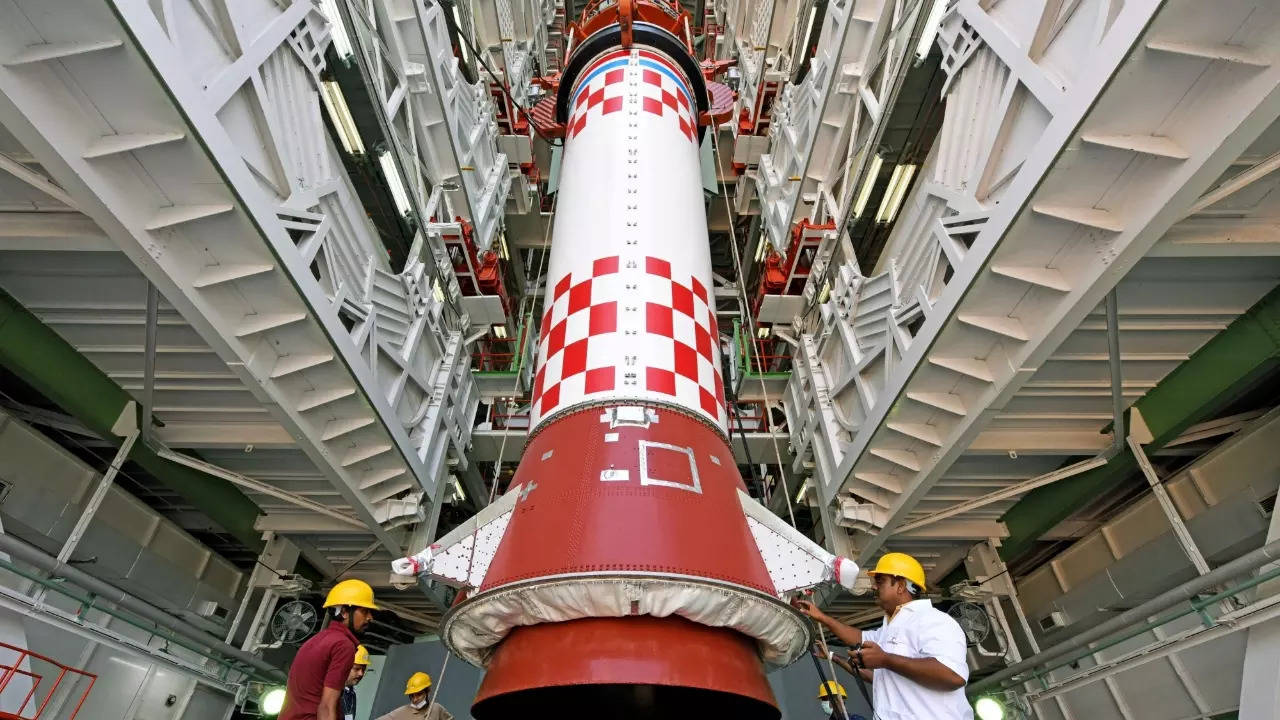ISRO launches its smallest rocket carrying AzaadiSAT, 8-kg satellite designed by girl students across India
The Indian Space Research Organisation (ISRO) launched the country's Small Satellite Launch Vehicle (SSLV) from the first launch pad at Satish Dhawan Space Centre in Sriharikota at 9:18 am. SSLV would carried Earth Observation Satellite -02 and a co-passenger satellite AzaadiSAT.

Small Satellite Launch Vehicle (Photo: Twitter/@ians_india)
Chennai: The Indian Space Research Organisation (ISRO) on Sunday launched the country's Small Satellite Launch Vehicle (SSLV) weighing 110 tonnes from the first launch pad at Satish Dhawan Space Centre in Sriharikota, about 135 km from Chennai at 9:18 am.
After the launch, ISRO chairman S Somanath said the SSLV-D1 performed as expected at all stages. "In the terminal phase of the mission, some data loss is occurring. We are analysing the data to conclude the final outcome of the mission with respect to achieving a stable orbit," he said.
SSLV carried Earth Observation Satellite -02 and a co-passenger satellite AzaadiSAT. Notably, AzaadiSAT is a Cubesat weighing around 8 kg. It is developed by the student team, 'Space Kidz India'. Around 750 girl students from government schools across the country designed the satellite to mark the 75th Anniversary of Independence.
The AzaadiSAT carried 75 different payloads each weighing 50 grams to conduct femto experiments.
According to reports, the Azaadisat payload will play Janagana mana for 1 and half minutes in space in Rabindranath Tagore's original voice.
Spacekidz's song on space awareness will also be played in Space. A selfie camera with new solar cells will be tested and monitored in Space. Meanwhile, 109 drawings with the names of 35,000 children will also be sent to space.
One of the payloads was coded by students. It will detect radiation and temperature. The ground system developed by ‘Space Kidz India’ will be used for receiving the data from the AzaadiSAT.
The significance of SSLV is that it has the fourth stage which carries a liquid propulsion-based Velocity Trimming Module for placing the satellites into the intended orbit. To fire the first three stages, the rocket comprises solid fuel.
Trending:
End of Article
Subscribe to our daily Newsletter!





Related News





NASA's Hubble Telescope Hits Pause To Science Missions; Here's Why

Boult Launches First Soundbars In India At Just Rs 4,999; Check Specifications, Features, More

Telegram Down In India: Users Face Error In Sending Messages On WhatsApp Alternative

NVIDIA Delivers First AI Supercomputer To OpenAI; Elon Musk Reacts

How To Maximise Generative AI Usage While Simultaneously Minimising Potential Risks









